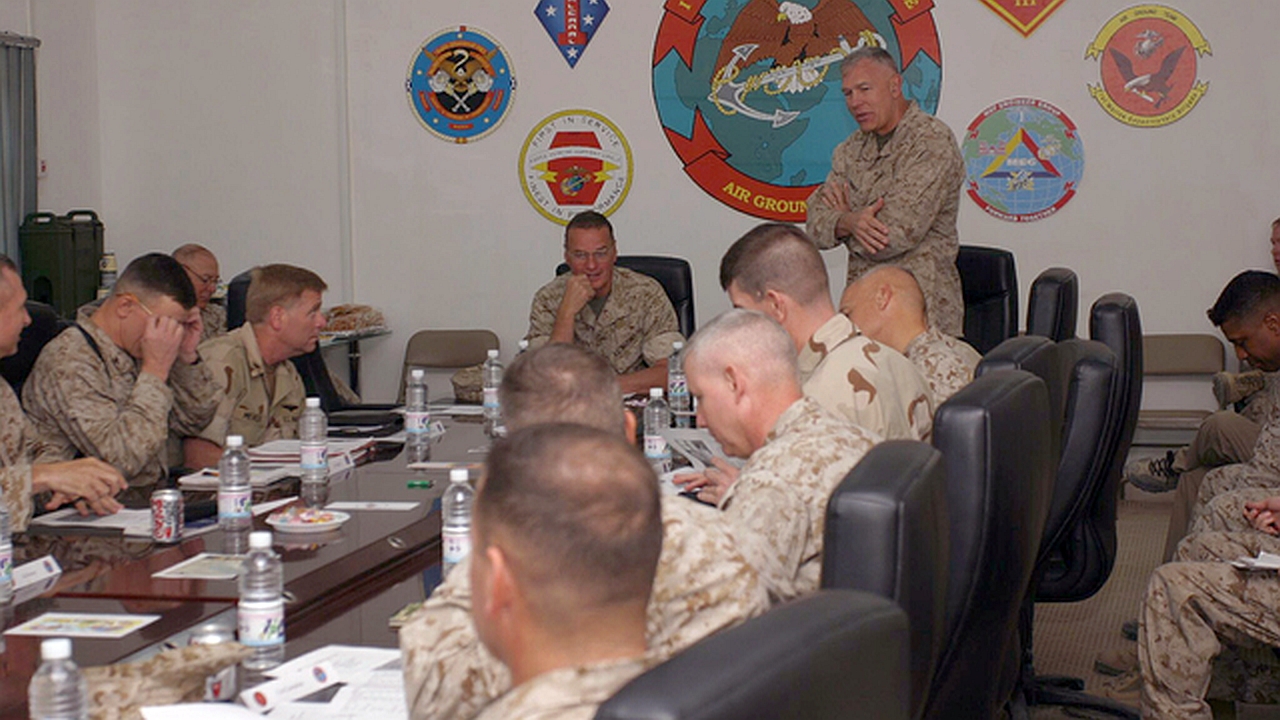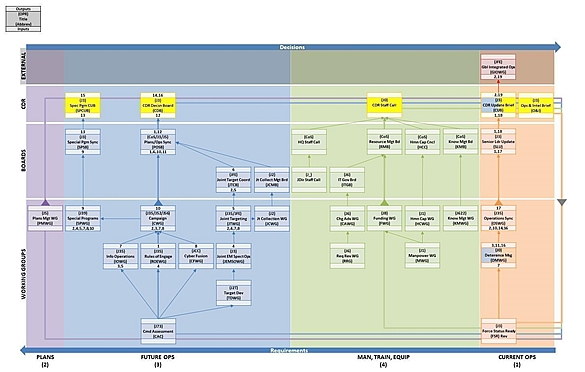
Organization Management Rhythm (part 6.3): Tools – Information Flow Diagram (IFD)
This article is part 6.3 of a series of articles on Organization Management Rhythm.
The purpose of the Information Flow Diagram (IFD) is to visually depict how the cross-functional meetings executed by the staff support the organization’s decision cycle and their shared understanding. A clearly defined IFD illustrating the linkages among the staff’s meetings in support of the organization’s decision cycle is a valuable staff tool that serves not only to inform the proper sequencing of the Organization Management Rhythm, but also to enable shared understanding among the staff and codification of staff activities.
The IFD is laid out both horizontally and vertically. Horizontally, the IFD is divided into “swim lanes”. These lanes group the staff meetings by purpose. The bottom lane contains Organization Management Rhythm events where “Product Production” typically occurs. These products are then fed (denoted by solid lines connecting Organization Management Rhythm events) to the appropriate meetings in the “Act and Plan” swim lane where they are refined and coalesced. The outputs of the meetings in this lane feed the organization’s touch points in the “Decision and Guidance” swim lane. These touch points provide a forum for the senior staff to both receive relevant information necessary to make timely decisions as well as provide the staff with guidance in the execution of the mission and support their shared understanding of the current situation. Additional horizontal swim lanes are located above the Decision and Guidance lane to annotate parent organization’s touch points which either the senior staff or staff must support. In a related manner, a solid stripe at the bottom of a meeting box indicates that subordinate organization participation is required to support the required input or output of that event.
Vertically, the IFD is notionally divided into planning horizons (from right to left: Current Operations, Future Operations, and Future Plans). The arrangement of meetings within these planning horizons reinforces their purpose and helps illustrate the hand off of planning efforts from Future Plans to Future Operations. Additionally, the meetings are aligned vertically on the IFD based on which critical path they support. Typically, a staff section will have three critical paths: Plans, Operations, and Man-Train-Equip (MTE). To aid in recognizing these critical paths, the meeting events are color coded on the IFD according to which path they support (e.g., events in the Plans critical path are colored blue).

Next part (part 6.4): Tools – Staff-Utilization Matrix.
Acknowledgements: Thank you to Tomi Antill, Keith Davis, Elise Keith from Lucid Meetings, JFHQ-C Leadership, and Kendra Albright from Kent State University, without whose support this series would not have been possible.
Header image source: U.S. National Archives, Public Domain.
Reference:
- Turner, J. A., & Williams, D. E. (2020, October 1). JECC KM Practitioners Training. https://www.jecc.mil/Training/JECC-KM-Practitioners-Training/ ↩






